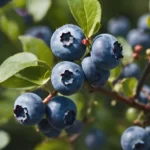Peach trees (Prunus persica) are beloved for their sweet fruits and beautiful blossoms. Originating from China, they have been cultivated for over 2,000 years, spreading worldwide to become a staple in many orchards and gardens. Peach trees hold significant cultural value in various societies, often symbolizing immortality and unity. This section will explore the origins, cultivation history, and cultural significance of peach trees, setting the foundation for understanding their unique characteristics.
Identifying Peach Trees: Key Characteristics
Peach trees are distinguished by certain key features. Typically, a mature peach tree can reach heights of 15 to 25 feet, with a similar spread. The bark of peach trees is notable for its smooth texture and reddish-brown color, which can become more rugged and split as the tree ages. The overall shape of the tree tends to be rounded or vase-like, a characteristic that is often enhanced through pruning in cultivated settings.
Peach Tree Leaves
The leaves of peach trees are an important identification marker. They are lanceolate (long and narrow) with a pointed tip, typically measuring 3 to 6 inches in length. The color of the leaves is a vibrant green, turning to yellow or red in the fall before shedding. A unique feature of peach tree leaves is their serrated edges, which can be finely or coarsely toothed. The arrangement of the leaves along the branches also aids in identification, with a distinctive alternate pattern.
Peach Blossoms and Fruits
Peach blossoms are a hallmark of the tree, signaling the onset of spring. These flowers are usually pink, although they can vary from white to deep rose, and they emerge before the leaves. Each blossom consists of five petals and exudes a delicate, sweet fragrance. Following pollination, these blossoms give way to the peach fruits. Peaches develop through several stages, starting as small green orbs that gradually enlarge and change color. As they ripen, the fruits typically exhibit a reddish blush over a yellow or cream background, depending on the variety, and are covered with a soft fuzz.
Growth and Lifecycle of Peach Trees
The growth and lifecycle of a peach tree are dynamic. From a seedling, the tree rapidly grows, reaching fruit-bearing maturity in about 3 to 4 years. Peach trees are deciduous, meaning they shed their leaves annually. In winter, they enter a dormant phase, which is crucial for the health and productivity of the tree. The lifespan of a peach tree is relatively short in comparison to other fruit trees, often living 12 to 20 years. Their productivity tends to peak in the middle years, gradually declining as the tree ages.
Peach Tree Varieties
There are numerous varieties of peach trees, each with its unique characteristics. These varieties differ in size, shape, color of blossoms, and type of fruit. Some are bred for climates with cold winters, while others thrive in milder regions. Freestone and clingstone peaches are two broad categories based on how the flesh adheres to the pit. The variety also influences the tree’s resistance to diseases and pests, making the choice of variety an important consideration for growers.
Common Pests and Diseases
Peach trees, like all fruit trees, are susceptible to various pests and diseases that can impact their health and appearance. Common pests include peach tree borers, aphids, and mites, which can damage leaves, branches, and fruits. Diseases such as peach leaf curl, brown rot, and bacterial spot are also prevalent. These issues can cause symptoms like deformed leaves, fruit discoloration, and premature fruit drop. Regular monitoring, proper pruning, and appropriate treatments are essential for maintaining healthy peach trees and managing these challenges.
Conclusion
In summary, peach trees (Prunus persica) are not only valued for their delicious fruits but also for their aesthetic appeal. From their distinctive leaves and stunning blossoms to the various growth stages of their fruit, these trees add beauty and utility to any garden. Understanding the characteristics, lifecycle, and needs of peach trees is crucial for successful cultivation and enjoyment. Whether you’re a seasoned gardener or a newcomer to fruit tree care, exploring the world of peach trees offers a rewarding experience. Their relatively short lifespan makes each season with a peach tree a cherished time, encouraging us to savor and appreciate the beauty and bounty they bring.



